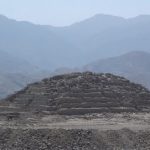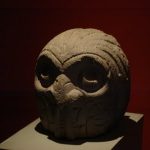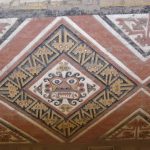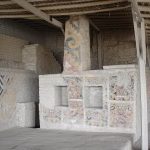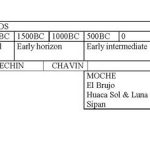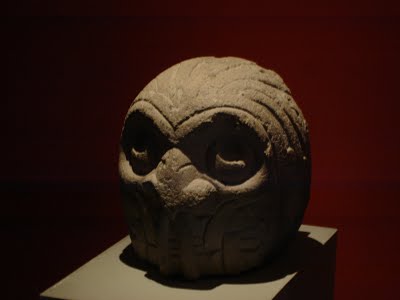
No. 510 SEPTEMBER 2013 Edited by Graham Javes
HADAS DIARY
A proposed visit to Portsmouth Dockyard. Your response is needed. SEE BACK PAGE.
Tuesday 8th October, 8pm Brunel’s Tunnel under the Thames. The first tunnel under a river anywhere in the world, built by Sir Marc Brunel and his son Isambard Kingdom Brunel (then only 19 years old). A lecture by Robert Hulse, Director of the Brunel Museum.
Tuesday 12th November, 8pm The Lions on Kunulua: excavations of the Early Bronze and Iron Age periods at Tell Tayinat, Hatay, Turkey. Lecture by Dr. Fiona Haughey.
Sunday 1st December, 12 noon – 4.30 pm (approx.) HADAS Christmas Party at Avenue House. Buffet lunch. Price £25 to include one drink. Cash bar. Booking details coming soon.
Lectures are held at Avenue House, 17 East End Road, Finchley N3 3QE, starting at 8pm prompt, with tea/coffee and biscuits afterwards. Non-members are welcome (£1.00). Buses 82, 125, 143, 326 and 460 pass nearby. Finchley Central Station (Northern Line) is a short walk away.
Finds in Focus, 2013-2014
During the academic year 2013/2014 HADAS will again run the course Finds in Focus. This will concentrate on post-excavation analysis, and be tutored by Jacqui Pearce BA, FSA, MIfA. It will be held on Wednesday evenings, 6.30–8.30pm at Avenue House, (address above). There will be 22 sessions starting on 2nd October, 2013. The cost of the course will be covered by a donation to HADAS of £275.
The aim of this award-winning course is to provide tuition in identifying, recording and understanding different classes of finds from archaeological excavations. Using material from sites in the London Archaeological Archive and Research Centre (LAARC) that were never fully written up, the intention is to bring them to publication through various means. This year we will be continuing work on sites excavated by the Guildhall Museum in the early years after the Second World War, through a combination of practical sessions and tuition. By examining a wide range of finds, from pottery to clay pipes, glass and building material, we hope to learn more about the people who used them and the world in which they lived.
HADAS and cricket bats in East Finchley Stewart Wild
What is the connection between HADAS and cricket bats? No, this isn’t a question from Victoria Coren’s baffling puzzle quiz Only Connect on BBC4. It started at the end of July when I called in to see Chairman Don, Jim and Bill who were working on a HADAS excavation of the old air-raid shelters at Martin School in East Finchley.
I mentioned I had reached the school on the High Road by driving down Church Lane from East End Road. Don observed that I had therefore passed Hobbs Green and Cricket Row. “What?” I said, never having heard of either. I knew the first turning on Church Lane named Elm Gardens (a friend once lived there), but the other names were new to me. How come I had not noticed them before?
On the way home, I went back down Church Lane to look more closely. Hobbs Green comprises a short cul-de-sac of new and old houses; a pair of new houses bears the name “Wickett’s & Ashes Lodge” (sic). Cricket Row is just that, a terraced row of six new houses in Church Lane with a very small nameplate that is easy to miss. I felt better.
Don said that the names related to a cricket bat factory that used to be in the area. What? How come I’d never heard of that either? I had to get to deep extra cover on this one; Google helped. It turns out that some of the Hobbs Green houses and garages were indeed built on the site of a cricket bat factory owned by Summers Brown & Sons Ltd. The factory seems to have been built around 1911 on the site of a house named Glencroft, dating from around 1830 and shown on the 1894 OS map.
The name of the little road honours the legendary cricketer, Sir Jack Hobbs (1882–1963) who used cricket bats made by Summers Brown. In 1908 Summers Brown filed a patent for a device to act as a shock absorber in the cricket bat handle. The patent involved taking a solid cane handle and making saw cuts in it. Then flaps of rubber were inserted and interweaved to make the handle flexible. What Jack Hobbs made of it isn’t recorded, but I remember from my schooldays using a bat constructed in this way, so presumably Summers Brown’s idea made sense.
I could find no further mention of Glencroft in any local history publications, nor any more about the cricket bat factory. But I’m still looking, and if I find anything interesting, I’ll let you know. If readers have anything to add, do share.
There’s still something odd about the Jack Hobbs and Finchley connection. The great man was born in Cambridgeshire, played all his cricket for Surrey (and England), lived in south London and died in Sussex. His only connection with Middlesex seems to have been when he played at Lords!
THE ARCHAEOLOGY OF THE MIDDLE AND NEW KINGDOMS OF ANCIENT EGYPT: a course arranged by the Mill Hill Archaeological Study Society.
We will investigate the development of one of the world’s oldest civilisations from the beginning of what is termed the classical period of Ancient Egypt – the Middle Kingdom – through the period of Empire – the New Kingdom. It is also the time when the state religion was swept away by the changes introduced by Akhenaten. We will examine these to determine if his Atenism was the world’s first monotheistic religion. We will study the single surviving intact pharonic tomb, that of Tutankhamun and review his role in the Amama period.
Venue: The Eversfield Centre, 11 Eversfield Gardens, Mill Hill, MW7 2AE
Time: 10:00 – 12:00 Fridays, beginning 4th October 2013
Tutor: Scott McCracken Cost: £140.00 for 20 classes
Enrol at the first meeting. If you have not previously attended the Society’s meetings, please contact the Secretary, Peter Nicholson, Tel: 020 8959 4757. http://www.mhass.co.uk
LONDON AND MIDDLESEX ARCHAEOLOGICAL SOCIETY:
LOCAL HISTORY CONFERENCE: THE RIVER AND PORT OF LONDON
Saturday 16 November 2013: 10am – 5pm. Weston Theatre, Museum of London.
Programme:
A changing port in a changing world. London’s harbours from the 1st to the 18th century, Gustav Milne, Director of the Thames Discovery Programme.
Re-invention and Change: the Port of London from 1790-1938, Chris Ellmers, Founding Director, Museum in Docklands.
Presentation of the LAMAS Publications Awards for 2013
Lunch (See below)
Local history and the environmental history of the Thames, 1960-2010, Vanessa Taylor, Research Fellow, Greenwich Maritime Institute.
‘Primus Omnium’, the world’s first modern police force. Robert Jeffries, Curator, Thames Police Museum.
Tea and biscuits (served in the Clore Education Centre and included in conference price)
The Thames as a provider of drinking water, Mark Jenner, University of York.
‘The Thames Beautiful’- the artist’s perspective, Mireille Galinou, Arts and Museums Consultant and former Curator of Paintings, Prints and Drawings at the Museum of London.
NB. Arrangements for Lunch. Refreshments may be purchased from the Museum’s restaurant and café, or bring your own. The Clore Education Centre’s lunch space, beside the local history displays, will be available for people to consume their own food and drink.
Tickets will be on sale from 1st September. Early-bird: £12, before 31 October; £15 from 1st November. Tickets can be obtained by post from Eleanor Stanier, LAMAS Local History Conference, 48 Coval Road, East Sheen, London, SW14 7RL, enclosing an SAE. or via the LAMAS website, paying by PayPal. Further details at www.lamas.org.uk/localhistory
The conference is expected to be a sell out and the last 20 tickets will be sold over the phone to avoid exceeding the capacity of the conference hall.
Support for the ambitious Build the Lenox project, Deptford Stewart Wild
On Sunday 21 July, I visited Brompton Cemetery on the occasion of its annual Open Day, primarily to visit the Catacombs which are only open on this one day each year. If you’ve never seen Victorian cemetery catacombs – there are similar loculi vaults at Kensal Green and West Norwood – they’re worth a visit.
It was a gloriously sunny day, and many other organisations had display stands, out to attract interest and donations. One such was for a new and rather ambitious project to build a replica of a seventeenth-century warship in its original shipyard and to promote Deptford as a site of world heritage. I met the mastermind behind the scheme, boat builder Julian Kingston, in period costume and accompanied by an impressive Saker naval cannon dating from around 1620.
In 1513 Henry VIII founded the Royal Naval Dockyard at Deptford, on the south bank of the Thames, where hundreds of warships and trading vessels were subsequently built. Five hundred years later the dockyard still exists – just, with many of its major features extant. Since 1984 it has been known as Convoys Wharf – Prince Street and Watergate Street form part of the boundary.
Since 2000, plans by Hutchison Whampoa to redevelop the area for mostly luxury residential use have met with much local protest. However there is considerable support for a new project to build a replica of the Lenox, the first warship to be constructed in the grand shipbuilding programme initiated by Charles II in 1677, managed by the diarist Samuel Pepys.
Inspiration has come from France where the replica of a famous French frigate, the Hermione, has reinvigorated the little town of Rochefort on the Atlantic coast near La Rochelle. The original Hermione was built in Rochefort in 1778 and played a major part as La Fayette’s flagship during the American War of Independence (we came third). The full-size replica, built in the very same shipyard from 1997–2012, has proved a major tourist attraction in western France.
Part of the Lenox proposals include restoration of Sayes Court Gardens, created by diarist John Evelyn in the 1670s, and which played a key role in the foundation of the National Trust. Following damage during WWII there is sadly little left today.
Julian Kingston realizes that this is a very long-term project, and will cost millions, but is encouraged both by local support, and from the Mayor of London and the developers, and by the success of the SS Great Britain project in Bristol. At my invitation, he has agreed to contribute to our HADAS lecture programme in 2015 or 2016, when plans for the Lenox will be rather more advanced.
The Convoys Wharf site will feature in Open House weekend 2013, on Saturday 21 September; further information is available on www.buildthelenox.org.
Good news from Chillingham, Northumberland Stewart Wild
It’s often said that newspapers rarely print good news but an encouraging item in the Daily Telegraph in July caught my eye.
Members who enjoyed the HADAS weekend trip to Northumbria in 2005 will remember that in addition to splendid visits to Berwick-upon-Tweed, Bamburgh Castle, Holy Island and Lindisfarne, we stopped at Chillingham, a village with a castle near Wooler in Northumberland. There we saw some of the very rare white cattle, members of an ancient breed that have lived totally wild on 650 acres of enclosed pasture and woodland for over 800 years. Our guide explained that their origins are mysterious, that there were only about fifty of them – that’s fifty in the whole world – and that they were clearly a threatened species.
But a decade ago, the Wild Cattle Association (nothing to do with me!), that owns the land where the animals roam, ended a lease that had allowed sheep to graze the same pasture. The result is that over recent years the cattle have had access to more food, and they’ve thrived on it. Milder weather in winter and spring has probably helped too. The good news is that there are now around one hundred of the beasts, but they’re still rarer than giant pandas! A Chillingham Wild Bull was featured on a Royal Mail 20½ pence stamp on 6 March 1984, part of a series of five issued to mark the centenary of the Highland Cattle Society.
Part two – North out of Lima, along the Pacific coast. Tim Wilkins
North of Lima a series of small rivers run out of the Andes and down to the Pacific, and in most of these are archaeological sites of various pre-Inca civilisations. Two hours north of Lima is Caral, originally thought to date from around 2,500 BC, but ongoing work there is pushing this date further back. The present earliest dating is between 3,500 and 3,000 BC, so contemporaneous with some of the earliest sites in Egypt. Like Mexican pyramids, they built new larger ones over previous ones. The construction is of stone facing held together with mud but the infill is of river pebbles held in cotton net bags, which luckily can be carbon-dated, as the site is pre-ceramic and with no carvings or decoration extant. There are eight pyramids in the main complex, roughly in a circle, with circular sunken “amphitheatres” in front of two of them. They think the site was mainly ceremonial though there are a few domestic buildings with fire-pits used for cooking. The whole site felt a lot like Egypt with the monuments at the edge of the cultivation, on a desert platform at the confluence of two rivers, and with bare desert mountains all around (Picture 1). From the highest point it is possible to look out over the surrounding valley and see a further 19 other pyramid complexes, mostly hardly excavated.
A further 2½ hours north is the site of Chavin de Huantar. To get to the site there is a road up to a pass in the Cordillera Blanca range of the Andes with a narrow tunnel at 4,200 metres high. After that the road becomes a narrow dirt track that drops to 1800 metres in little over an hour and has everything you really don’t want; rocks and rockfalls, potholes, streams, cattle, goats, donkeys, chickens, buses and trucks, roadworks, the tightest hairpin bends ever, and sheer drops with a distinct lack of barriers. Until 20 years ago Chavin was thought to be the oldest civilisation in South America, dating from 1200 –800 BC, but more recent discoveries elsewhere have overtaken this. The site itself is quite small and not fully excavated but has some impressive features. Pyramid platforms surround a rectangular ceremonial area. There are also circular sunken spaces and incredibly complicated water channels used both to channel the many streams underneath the structures, and to create sound effects to accompany the rituals, usually involving hallucinogens from the San Pedro cactus. So when the priest called for a sign from the gods, the channels were opened and the earth itself rumbled and shook as the water rushed through. Inset in the outside walls are rows of carved heads showing the priest’s transformation from human to jaguar, snake or condor under the hallucinogenic influence. Most of these heads are now in the excellent new Chavin museum (Picture 2).
Back down on the coastal plain some 200 miles north of Lima is the site of Sechin, another very early site, thought to be from 1800–1200 BC. Being near the coast, it is mostly built with mud bricks rather than stone, but it is reasonably well preserved up to head height. It is quite a small site and you can’t go inside, only walk around the stone outer walls, which are covered with over 300 carvings of priests and warriors. They are mostly not intact people, rather, a wild selection of body parts, all at different orientations: here decapitated heads, there a pair of legs, but upside down; two otherwise unattached hands clasped in a handshake, and now a torso without limbs.
Around the city of Trujillo are a huge number of sites from the Moche and Chimu civilisations dating from 500 BC to AD 1500. Just outside Trujillo are the Moche mud-brick pyramids now known as the Pyramids of the Sun and Moon, (also known as the Huacas de Sol y Luna – ‘Huaca’ being a religious site, usually a pyramid). The Pyramid of the Sun is the larger at 40 metres high, but it is not open to the public as it is unsafe – the conquistadors knew that the Moche buried their royals inside the pyramids along with hoards of gold, so they diverted a river to flow through the pyramid to get at the gold. The Pyramid of the Moon is smaller than that of the Sun, but is still huge – seven layered steps, each one with carved and painted friezes of warriors, captives, snakes, spiders, and creatures with reptile-bodies and feline heads. These have faded away on the outside, except on one face, but inside some spectacular images survive (Picture 3).
Just north of Trujillo are the Pyramid of the Dragon (the Dragon Huaca) and the Chimu site of Chan Chan. This pyramid is small, made of adobe mud-brick, and covered with carvings of human figures, rainbows and a snake or dragon. Sadly most of the carvings are modern reconstructions and it is impossible to distinguish which bits are original without being told. Chan Chan is the Chimu capital city, covering 20 sq. km., dating from AD 850 until the arrival of the Inca in about 1500. The city consists of ten walled citadels, each in itself a hugely impressive site, with monumental exterior walls, interior open spaces, and both religious and residential buildings. The walls are carved and decorated with iconography such as fish, pelicans and sea otters but, as with the pyramid, most of what is visible now is modern, again done in a way that makes it impossible to tell which are original and which are new.
60 Km north of Trujillo is the pyramid complex of El Brujo. This consists of three pyramids, pretty much right on the beach, another Moche site, dating from AD 200 – 650. The internal chambers are beautifully decorated with carvings and brightly coloured paintings of dancers, priests, catfish and other fish, and ‘The Decapitator’, a figure holding a knife and the head of a captive (Picture 4).
It was in one of these pyramids, the ‘Pyramid of Cao’, where in 2006 a spectacular burial chamber of a royal princess was discovered, with amazing artefacts, including stunning gold and copper headdresses, jewellery and pottery, along with the remains of female servants and a male warrior guard. This is very similar to a discovery announced just a few weeks ago at a site of the Wari culture near to Lima, where it seems that a succession of princesses were buried on successive levels of a pyramid, along with female servants and male guards. The finds from the ‘Lady of Cao’ burial are now on show at a very smart new museum.
We found that visiting all these sites had the potential to get very confused as to dates and civilisations, so we made this grid to help us through it all, showing a timeline, sites and civilisations.
In the next part: north again along the coast to Lambayeque, with sites dating from AD 500 –1000, a site from 3000 BC, or maybe older, then up into the Andes for a completely different set of sites.
What’s On in October. Eric Morgan
Thursday 3rd October, 8.00pm. Pinner LHS, Village Hall, Chapel Lane Car Park, Pinner. The Gruesome History of Bodysnatching, Robert Stephenson, (Friends of Kensal Green Cemetery).
Friday 4th Oct, 6.00pm. Geologist’s Association, Burlington House, Piccadilly, Confessions of a Flint Knapper, Prof. Phil Harding. Tea is served from 5.30pm. Wine and nibbles are available after meetings. Non-members are very welcome to attend for an introductory visit – please telephone (020 7434 9298) or email (sarah@geologistsassociation.org.uk) the Executive Secretary to book a place.
Thursday 10 October, 7.00pm. St Pancras Old Church, Pancras Rd, NW1. St Pancras Station, Simon Bradley. Admission £10, incl. wine with proceeds towards the church renovation.
Monday, 14th October, 3.00pm, Barnet Museum & Local History Society, Church House, Wood St, Barnet. 18th Century Remedies for Boils, Carbuncles and Warts, Carla Herrmann. Visitors £2.
Wednesday, 16th October, 7.30pm. Willesden Local History Society, St Mary’s Church Hall, Neasden Lane, NW10 2TS. Artists in Willesden, Margaret Pratt.
Wednesday, 16th October, 6.00pm. Gresham College, at the Museum of London. The Building of England: Retrospect and Prospect 410 AD to 2000, Simon Thurley (English Heritage). In this the final lecture in his series on the history of English building, Simon Thurley looks back. What can be concluded from a survey of 1,400 years of English architecture and social life? Free.
Wednesday, 16th October, 8.00pm. Edmonton Hundred Historical Society, Jubilee Hall, 2 Parsonage Lane, EN2 0AJ. Enfield Railways, Part 2 (West) Great Northern Line & Hertford Loop, Dave Cockle.
Friday, 18th October, 7.00pm, COLAS, St Olave’s Parish Hall, Mark Lane, EC3. Excavations in the Roman Town of Sandy, Catherine Edwards (AOC Archaeology). Visitors £2.
Friday, 18th October, 8.00pm, Enfield Archaeological Society, Jubilee Hall, (address as previous page) The Roman Bones of Old Enfield, Neil Pinchbeck. Visitors £1.
Wednesday, 23 October, 7.45pm, Friern Barnet & District LHS, St John’s Church Hall, Friern Barnet Lane (next to Whetstone Police Station). Friern Hospital, David Berguer. Visitors £2.
Thursday, 31 October, 8.00pm, Finchley Society, Drawing Room, Avenue House (address as previous page) A discussion. Visitors £2.
PROPOSED VISIT to PORTSMOUTH DOCKYARD Jim Nelhams
At the AGM there was a brief discussion about a possible outing to Portsmouth Dockyard to visit, among other things, the new Mary Rose display. The dockyard also contains the Victory and HMS Warrior, the first iron-clad, armoured warship, powered by steam and sail.
Depending on numbers, we are looking at a total cost of around £45, including £26 for group entrance to all three ships. The AGM agreed to look at a weekday, and we are considering some time in October.
Because of the high cost, we need to know that we have enough support before we book anything. Please let us know if you would like to come. Email, or phone Jim Nelhams or Don Cooper by 14th September.

